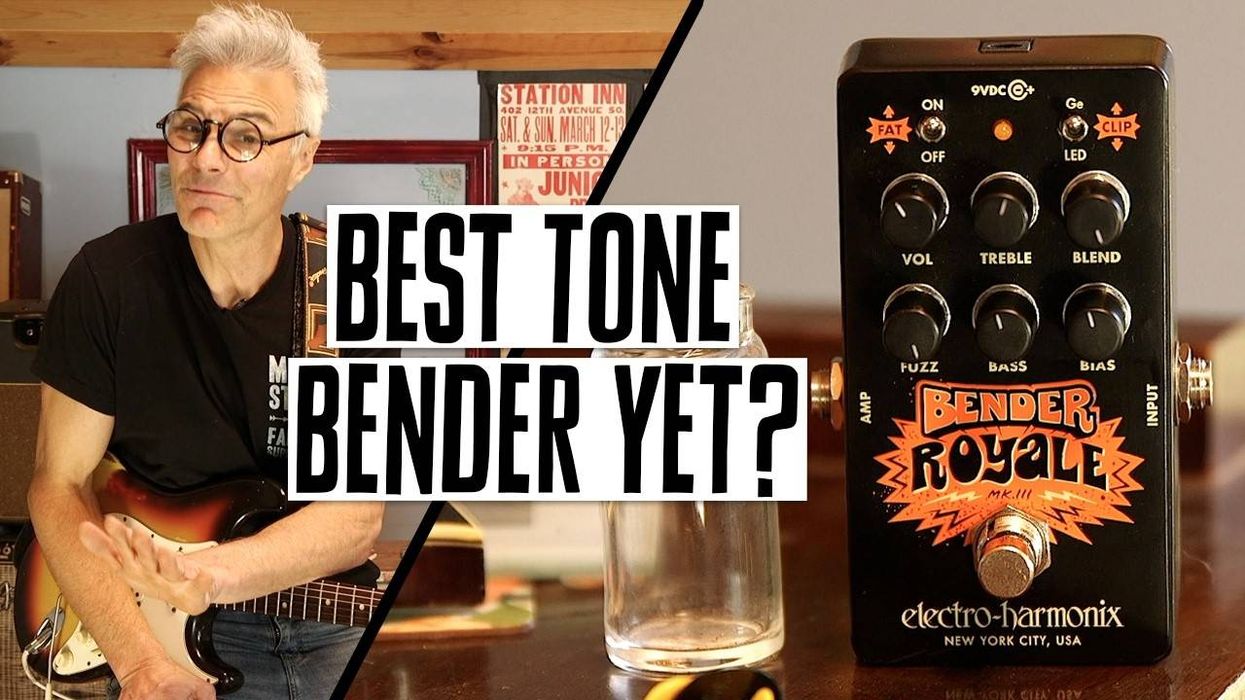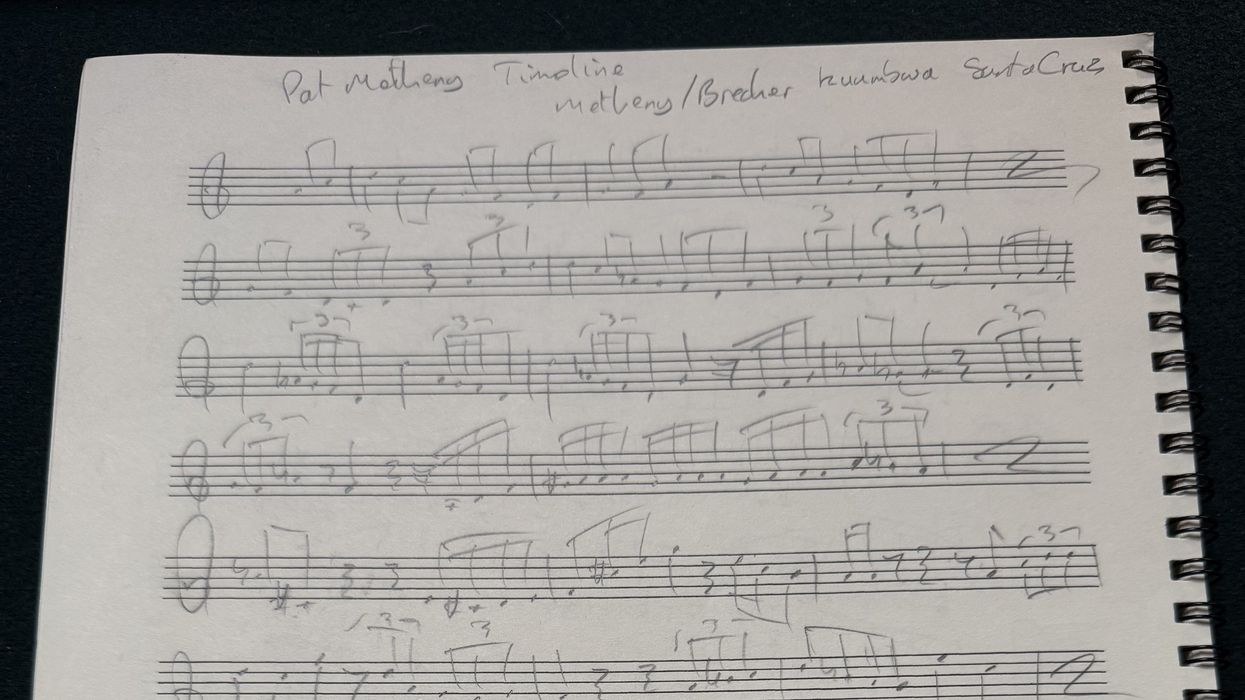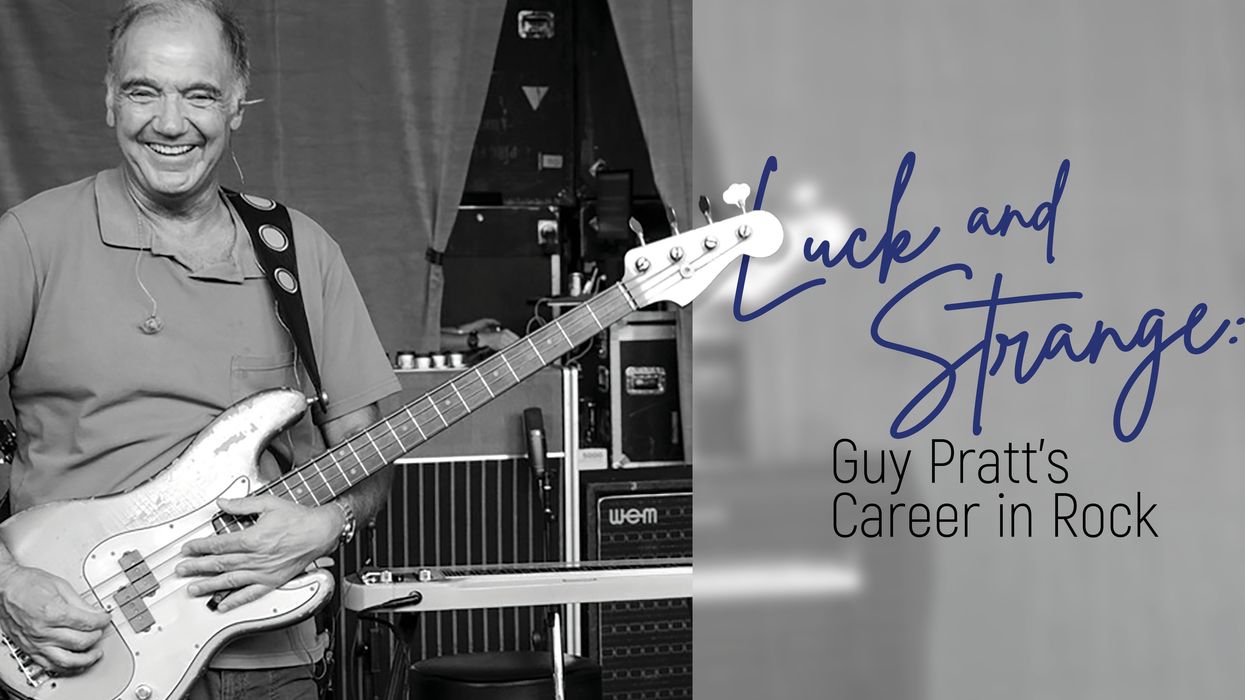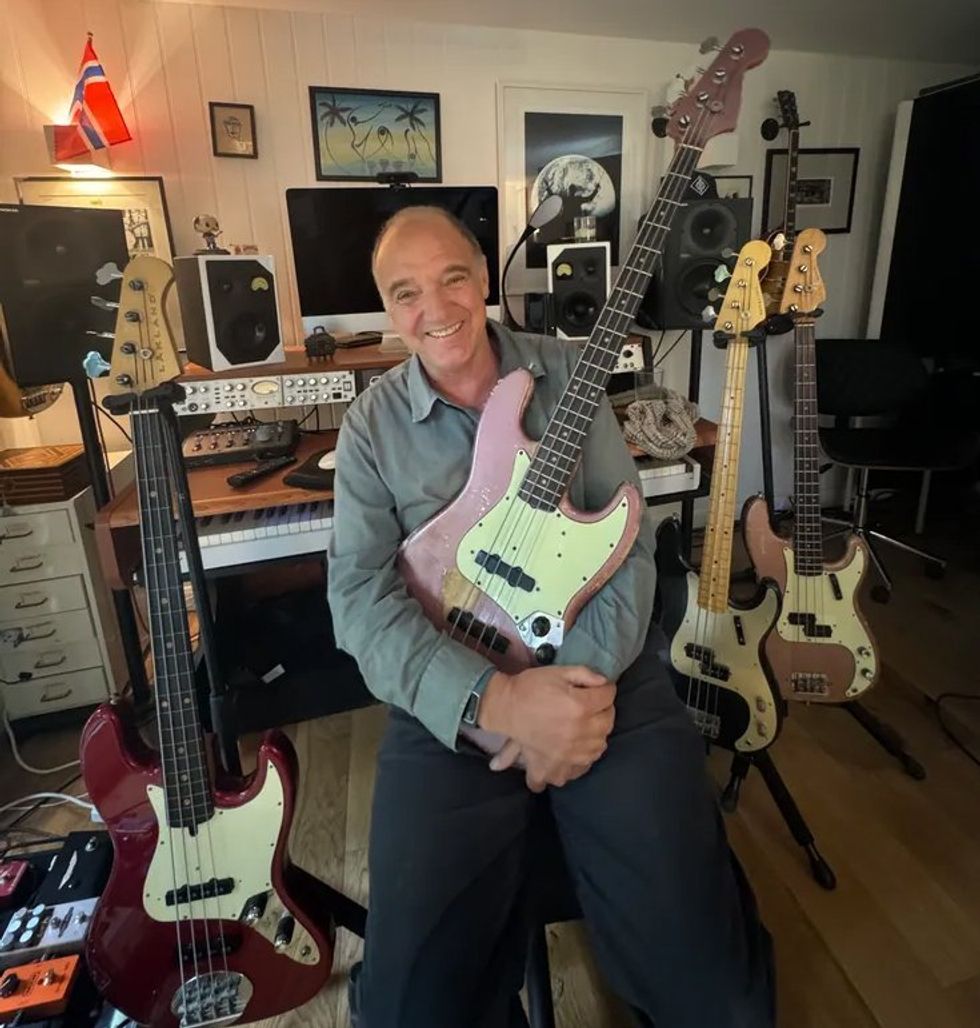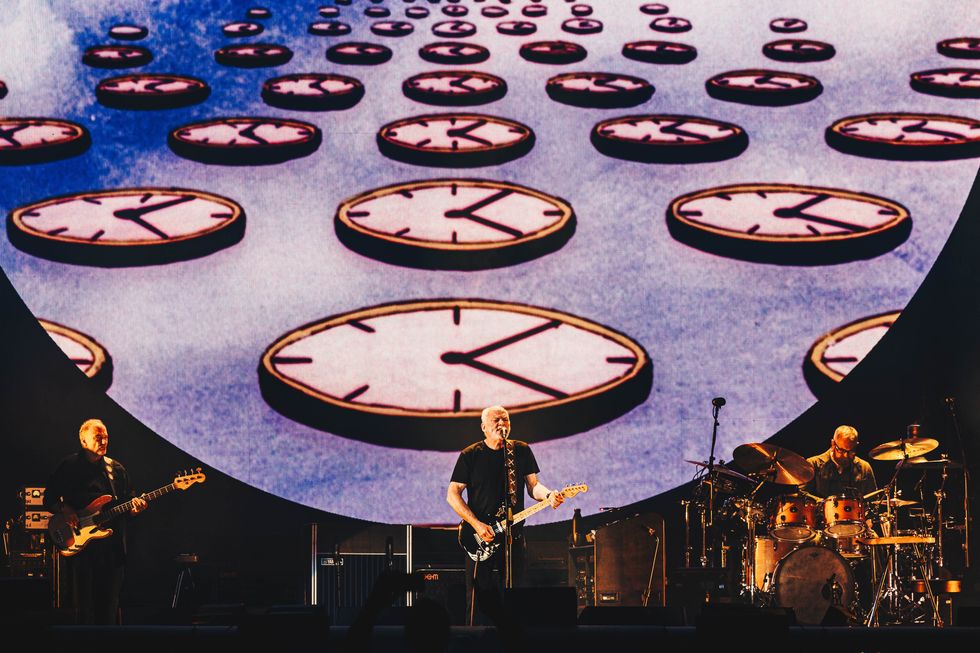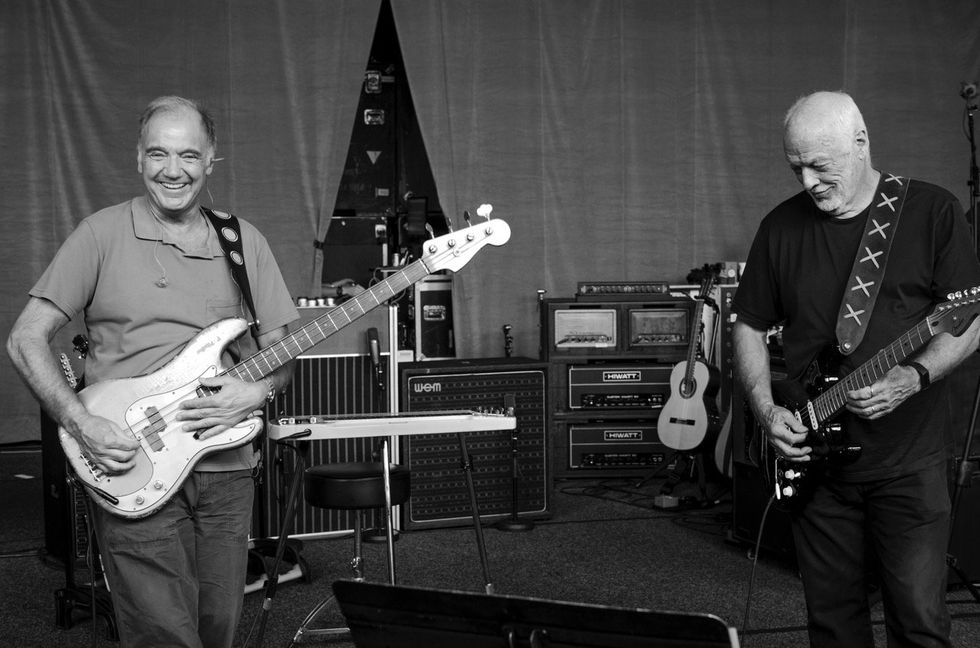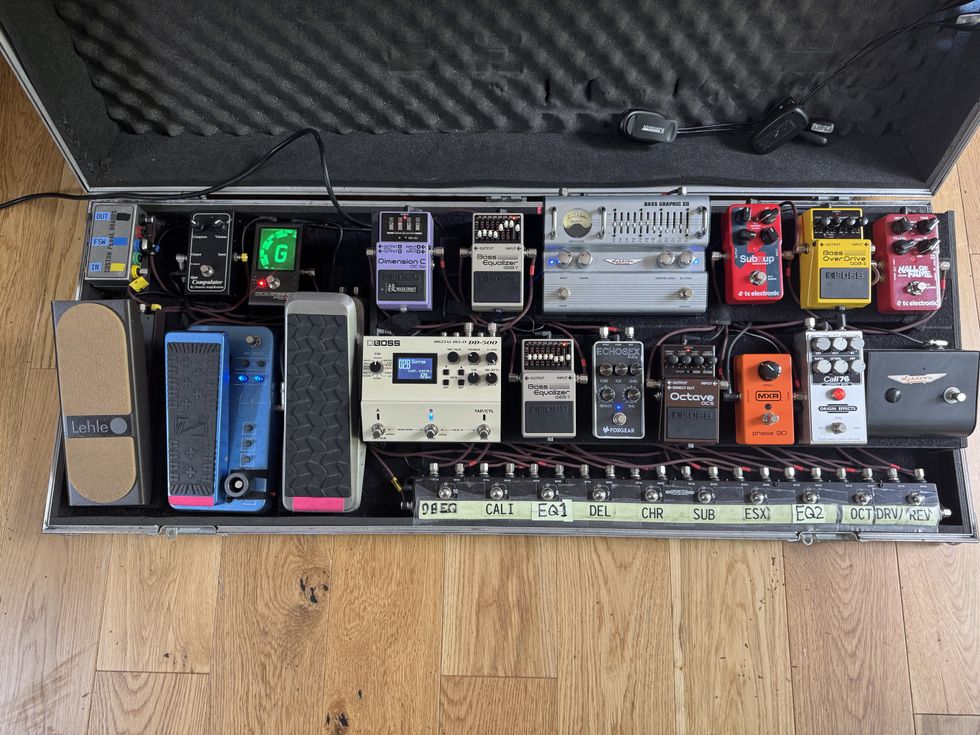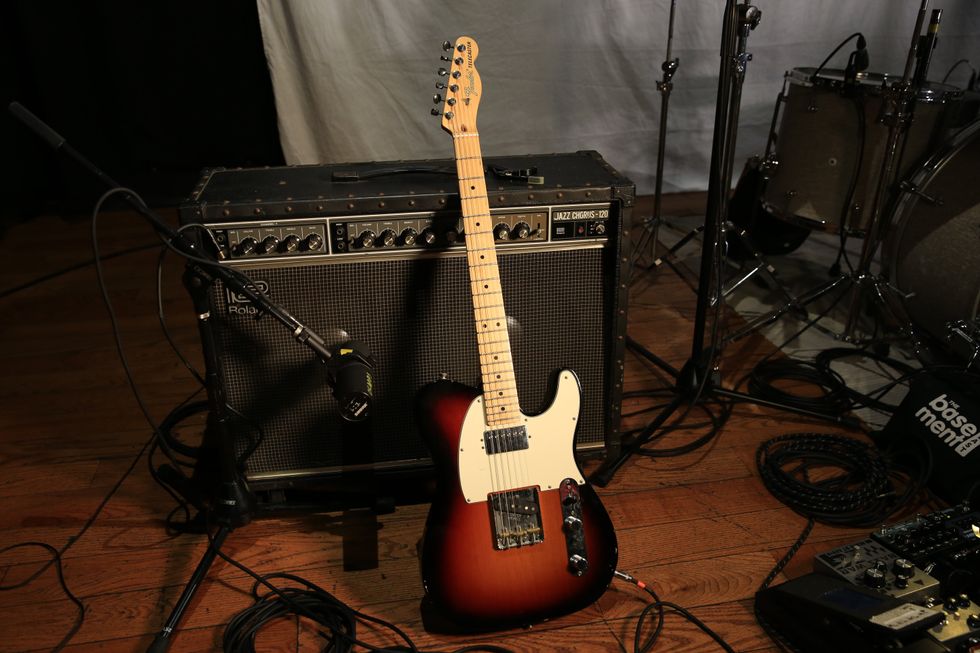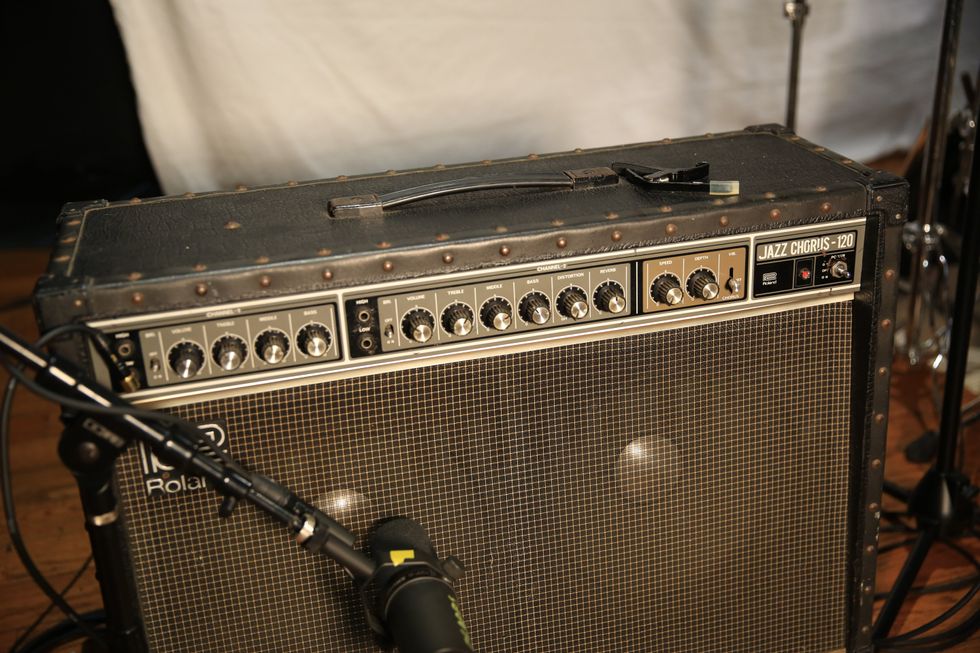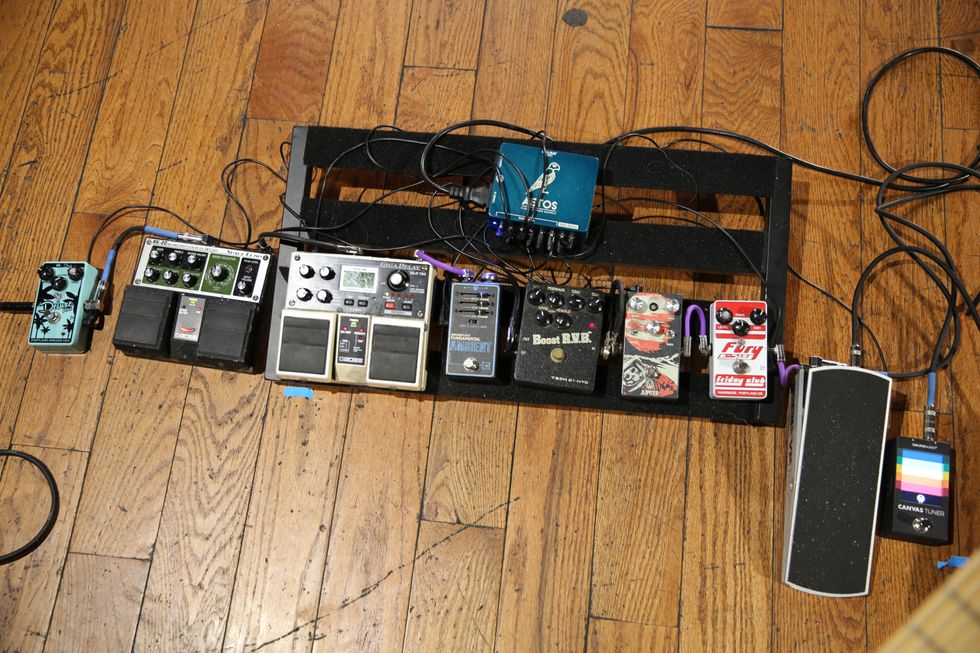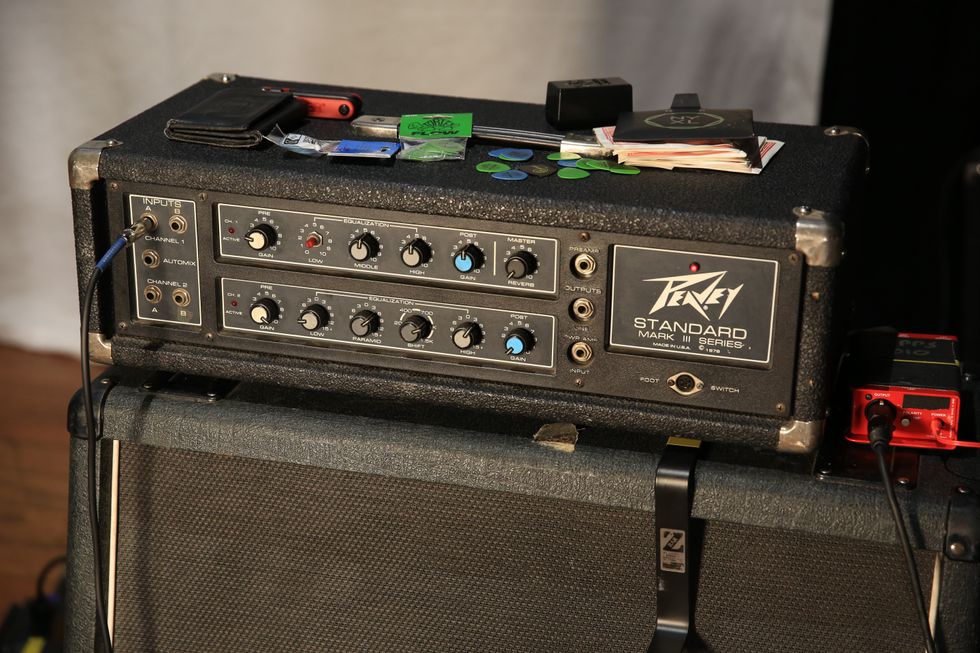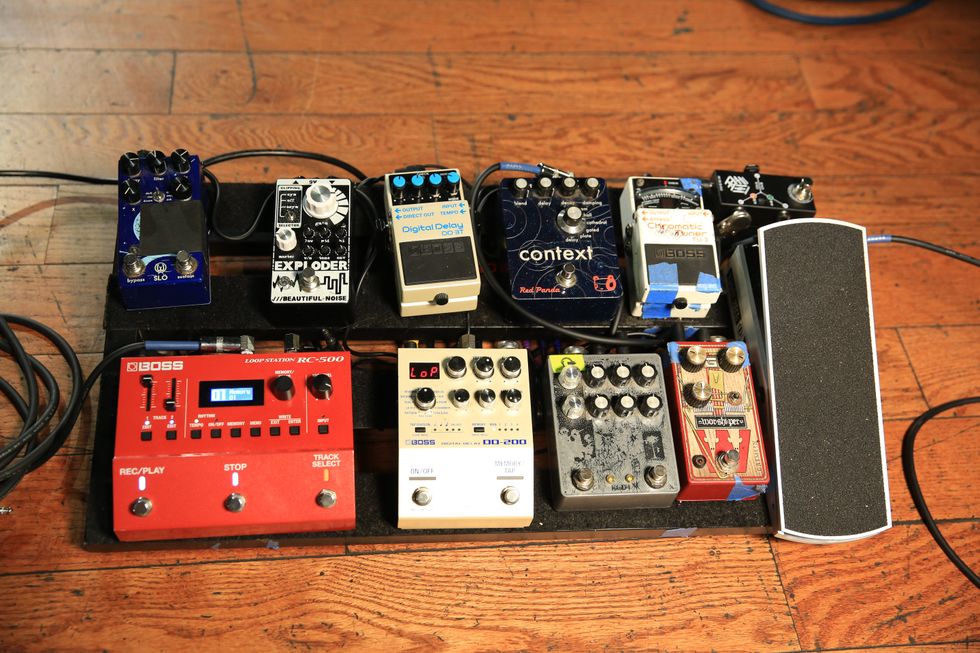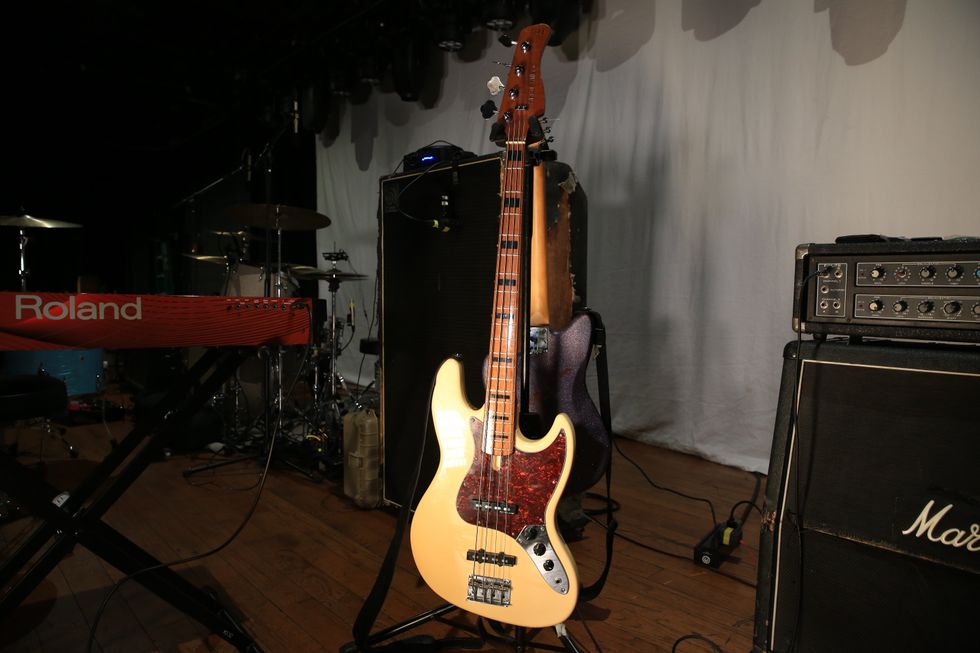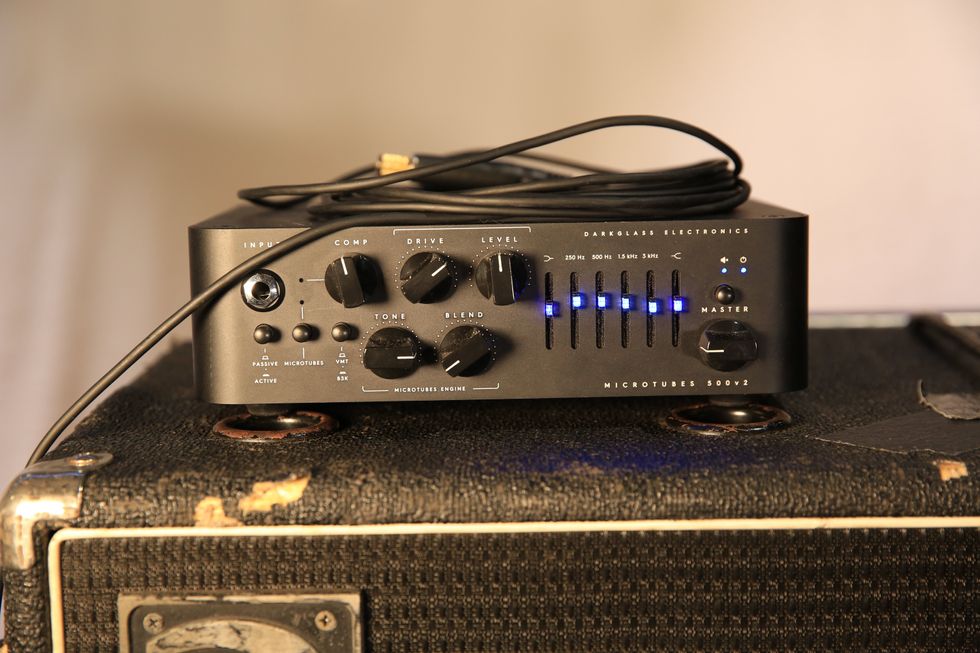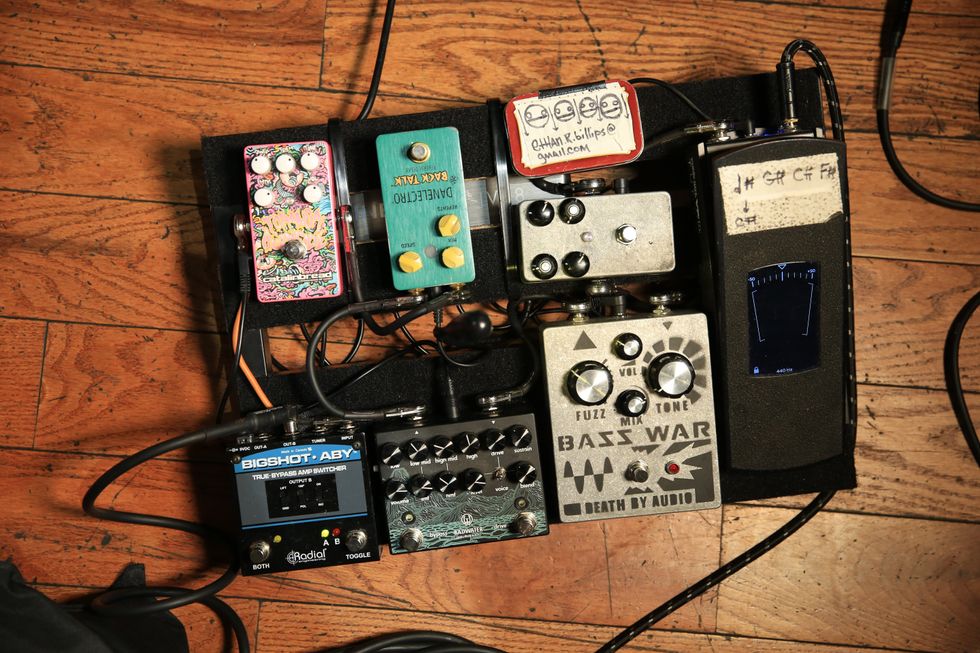Mention the words “synth guitar” and the mind conjures up images of ‘80s techno bands and a George Jetson-inspired future that never quite arrived. But mention “synth bass,” and that’s another thing entirely. There is nothing second rate or cheesy about a solid, voltage-controlled oscillator-driven bass track. So why have bass players let keyboardists take the bottom end in so many top hits?
GR-33B
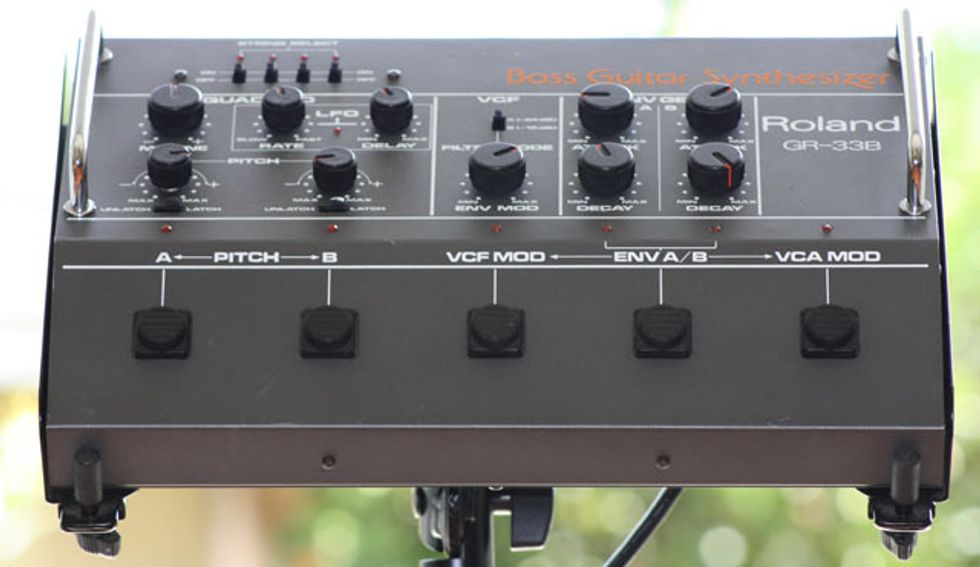 Click for larger image |
Like the GR-300, the GR-33B had excellent tracking, and the sawtooth waveform at the heart of its sound was satisfyingly aggressive. But the GR-33B never became the sound of “synth bass.” And the GR-33B only worked with two basses: the Roland G-33 and G-88. Both were reminiscent of a P-bass, and very similar to the Ibanez MC-800. This is not surprising, since all these basses were reportedly built in the popular Japanese Fuji Gen Gakki guitar factory.
Perhaps it was the limited bass selection, high cost, or the popularity of the ubiquitous Minimoog, but bass players continued to play second bass fiddle, as it were, to keyboard players, despite efforts by Roland, Peavey, Electro-Harmonix and others to update four string technology.
GR-33B Revived Via VB-99
Undaunted, Roland recently launched its latest bass synthesizer, the VB-99. Like the VG-99, the VB-99 is an updated version of an earlier system, in this case the Roland V-Bass. Modern Roland technology uses the GK-3B bass pickup, which easily fits to a variety of bass guitars, or third party piezo systems found in basses made by Brian Moore, Godin Guitars and others.
Hit page 2 for a comparison of the GR-33B and VB-99's GR-33B emulations with video...
Roland VB-99 vs Roland GR-33B
Like the VG-99, the VB-99 has an emulation of vintage Roland GR synth technology. But if bass players were expecting to find a clone of the GR-33B under the hood, they will instead find the same virtual GR-300 as found in the VG-99, only working in the bass register.
This might be disappointing for bass players who were looking for an exact clone of the only polyphonic analog synthesizer made just for them. On the other hand, when I compared the tracking and response time of the VB-99’s virtual GR-300 with the original GR-33B, the two synths were almost identical, with a response time in the 14-18 millisecond range. This surprised me, since the real GR-300 slightly outperformed the virtual GR-300 in the VG-99. This may have something to do with the qualities of tracking low frequencies, or perhaps the VB-99 has a slightly faster processor than the VG-99. And the VB-99 is even faster when emulating acoustic or electric bass sounds. In any case, the VB-99 certainly packs many buzzy, snarling synth bass sounds in its preset menu. And the flavor of its vintage GR-inspired synth engine matches the general sound of the GR-33B.
VB-99
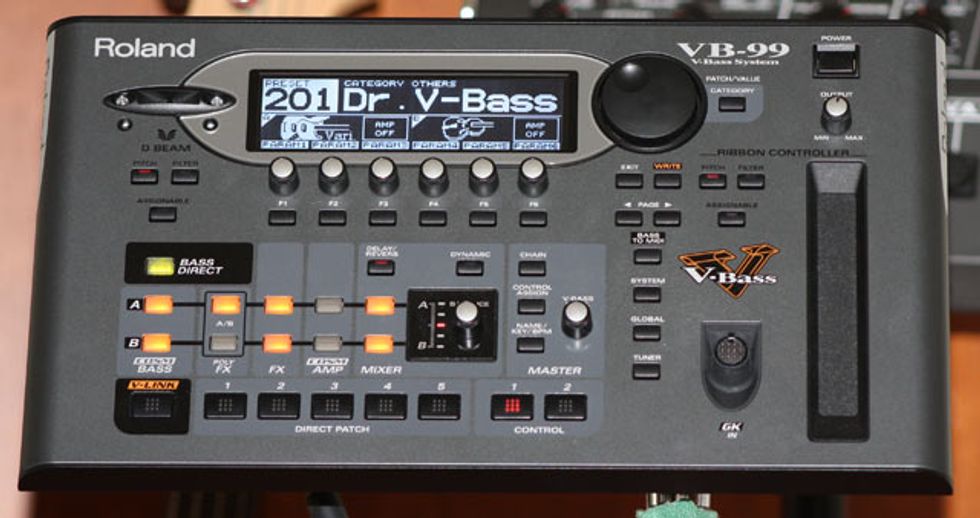 Click for larger image |
In fact, some of the best patches of the VB-99 work so well because they blend together two different bass sounds. Typically using one synth engine for a traditional warm, fat, low end sound, and the other engine for a bright synth element, or an octave shift effect that brings out clarity. And the VB-99 has dynamics capability to cross fade, or layer sounds, depending on how hard the notes are played.
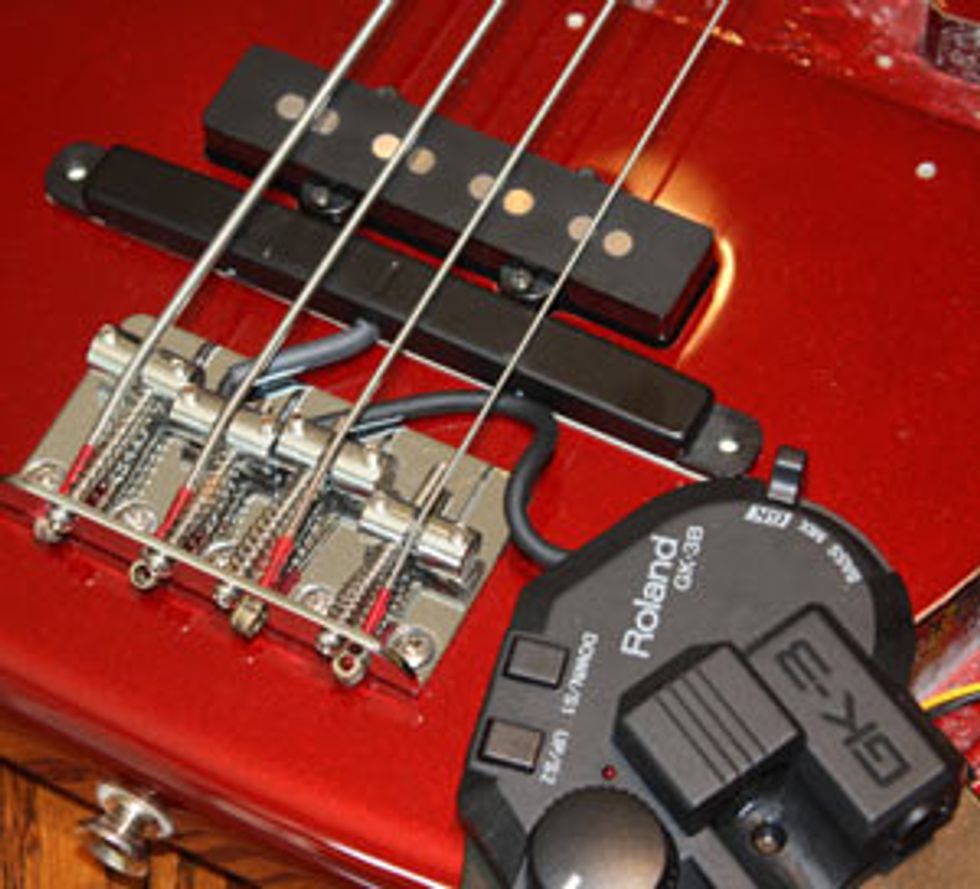 For a test bass I bought a red Squier P-bass off of eBay for less than the cost of the GK-3B pickup, thinking I would need to drill some holes to get everything fitted. The GK-3B offers several ways to mount to a bass, and I was able to properly secure the whole rig with one strip of double-sided tape for the pickup element and a simple pressure adjustment to hold the GK-3B electronics module in place.
For a test bass I bought a red Squier P-bass off of eBay for less than the cost of the GK-3B pickup, thinking I would need to drill some holes to get everything fitted. The GK-3B offers several ways to mount to a bass, and I was able to properly secure the whole rig with one strip of double-sided tape for the pickup element and a simple pressure adjustment to hold the GK-3B electronics module in place.
Broadly speaking, the bass sounds of the VB-99 fall into three categories: synth bass, electric bass, and upright bass. And the banks are laid out so that five similar sounds are grouped together. Using the VB-99 with the optional FC-300, you can step through banks until you reach say, acoustic basses, and then you have five or ten variations on that particular theme. And this is handy on the gig, when inadvertently going from “Warm Wood Bass” to “Pulse Dual Attack” could cause serious problems.
Hit page 3 for the VB-99 test with video...
VB-99 Patches with Mark Harris
VB-99 Testing the Patches
To evaluate using the VB-99 live, I recruited bassist Mark Harris, who does a wide-range of gigging in Los Angeles, and well as international touring with the band Venice. Initially, we checked out the VB-99 in a studio situation, and there was certainly quite a bit of “wow” factor. Mark immediately remarked that the tracking was excellent, but the VB-99 is more of an extreme signal processor, and does some heavy-duty DSP work on the raw string sound from the bass, rather than simply tracking the pitch of a note and triggering a sound.
We listened as the VB-99 reproduced a range of sounds from upright acoustic bass tones to grungy, prog-rock Rickenbacker bass, to over-the-top saturated lead guitar. Like all synthesizers, whether bass, guitar, or keyboard, part of the secret to success is knowing how to play to the sound. It may be novel to play a bass line from a Ramones tune with an upright bass patch, as I did, but if you want to convince somebody you have an acoustic bass, a walking bass line works much better.
On the gig the VB-99 was slightly less distinct. In this case, “the gig” was a noisy bar situation, always a place without much subtlety. We realized that maximizing the potential of the VB-99 might require something beyond a typical bass amp. A lot of the detail in the sound that was so obvious through studio monitors was lost with a bass amp. The VB-99 does have global settings that include line output, and amp output with and without a tweeter. But using a full-range system with little coloration, like a keyboard amp, seems to yield the best results.
To VB-99 or not to VB-99
Unlike guitar players with their vast expanse of floor adornments, bass players seem to do fine with (maybe) one pedal and a decent amp. In that case, it may be hard to justify the expense of a rig like the VB-99 and GK-3B. Not that justification has anything to do with buying cool new gear. But for the bass player in a demanding cover band situation, the VB-99 could easily be a lifesaver. Rather than a rack of basses, a player could focus on one or two premium instruments and use the VB-99 to recreate the necessary tones. And the VB-99 does more than just turn a Squier P-bass into a Les Paul, it also simulates a wide variety of amps, cabinets, mic’ing configurations, and just about every Boss effect ever made. Plus reverb and delay. Did I mention the unit has pitch-to-MIDI output as well?
Mostly, the VB-99 is still all about potential. While it’s certainly very cool to instantly switch from Music Man, to Upright, to SH-101 synth bass, the VB-99 easily suggests new techniques and approaches. I would love to see a solo bass set using only the VB-99 and a looper. After all, it only takes one imaginative player to write a killer riff with the VB-99 to change the way people think about “synth bass.”


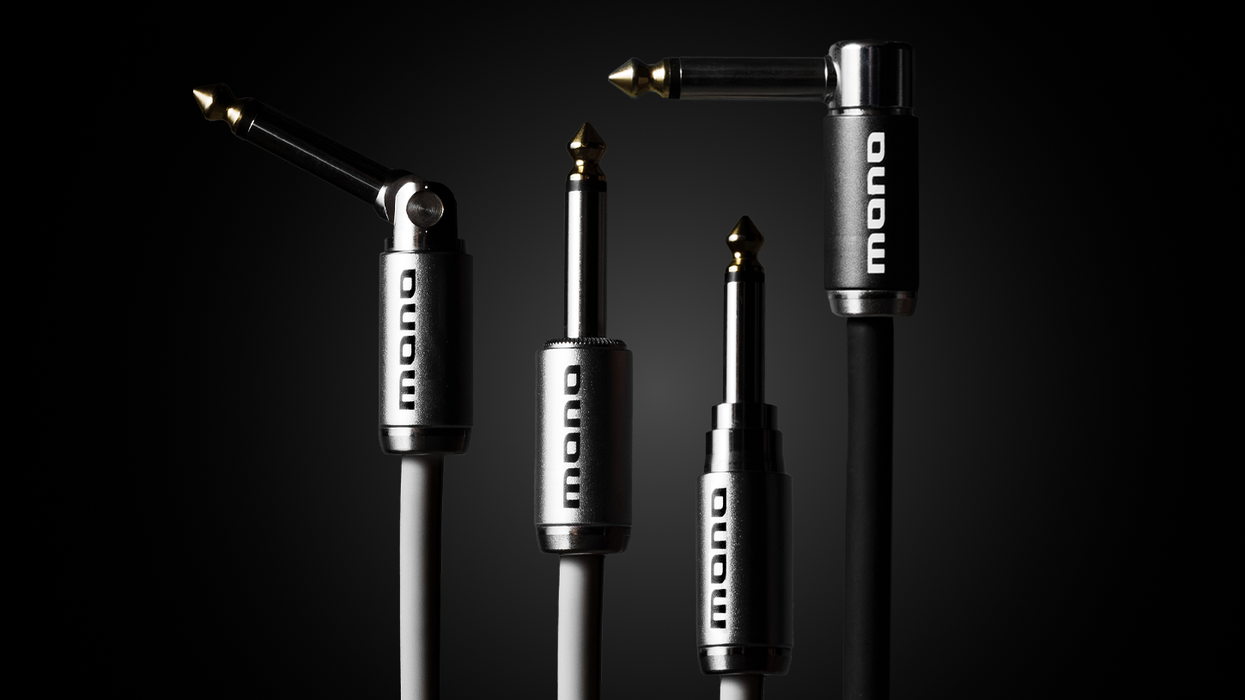


![Rig Rundown: AFI [2025]](https://www.premierguitar.com/media-library/youtube.jpg?id=62064741&width=1245&height=700&quality=70&coordinates=0%2C0%2C0%2C0)












 Shop Scott's Rig
Shop Scott's Rig


